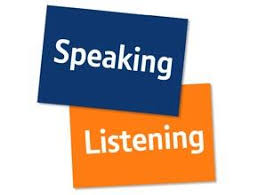 How social is social networking?
How social is social networking?
How long is a piece of string? Likewise the answer to the former question vary, as does the vigour with which they are argued. What is more interesting to me, are our communications aspirations as a global community. How do we want to communicate in the future?
Effective communication is a two way process which involves both, speaking and listening.
In traditional conversations we teach small children rules for effective communication. We are all predisposed to being more accomplished at speaking or the listening and we strive to find a balance.
We do not really teach children (or adults) etiquette with regards to digital communication. Digital etiquette's and cultures have evolved and are often rather vague. Communications don't have to happen in a set sequence. You can just post on twitter or face book with out reading or read with out posting. Time intervals are not set, people can respond immediately or at sometime in the future and multiple conversation or information transactions can take place at any given time. My interest here lies within weather or not this is an improvement?
Example, at a recent transition event for primary 7 pupils, designed to give them a positive experience of the future high school and the future peers, it transpired they had already made up their mind to 'hate' some of their new class mates. A fight broke out and was immediately stopped. On investigation as to why two children from different schools who had never met could be fighting so quickly the child answered "I hate him". "How is that possible you don't even know him",was the next question. "Yes I do" answered the boy, "How do you know him"? asked the adult. The answer? Face book.
This was one of the many example of antisocial networking which are increasing. The lines of reality and digital communication are not as clear for everyone. Two children on separate occasions this week said "OMG" not not the words, the letters. Sadly it is not just children, the recent case of two
Dunblane parents fight prearranged on face book to happen outside the Primary school , highlights some adults have difficulty with the concept also.
Are a certain amount of life skills required which prerequisite safe digital communication? If so how do we prepare future generations for safe use?
Supermarkets are criticised for displaying sweets next to cashiers, Toy companies are criticised for advertising during kids programmes but no one is really monitoring advertising on children's sites. Or worse still don't realise. The
Guardian highlighted this in 2009 after the
Byron report in 2008. The reports was updated in 2010.
The final example I have from this week is a child from another group I work with. The child has a blackberry however is rarely appropriately dressed and this week had toenails, which were so dirty, I though they were bruised. It is not an isolated case. For me, this highlights a lack of priorities. Why are communications devices priorities over basic care? There are many possible answers but no positive ones I can think of.
This brings me back to our communications aspirations. We know we are able to bring around huge cultural changes such as the smoking ban and that digital communications can be effective in helping us to do so. We know digital communication is here to stay. It can be used as a force for good or bad. What we don't seem to agree on or be discussing, is how we should aspire to communicate. Public relations is intrinsically reactive, we exist inside a given culture, but that should not dissuade us from having aspirational direction.
What are your communications aspirations? Where should we go?


